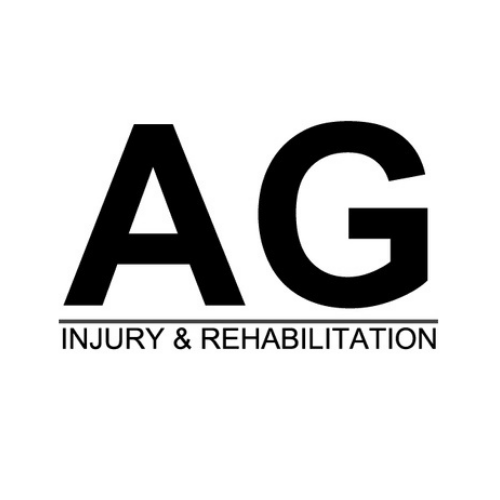Any injury that stops you in your tracks is frustrating, but for runners it can arguably be more frustrating. Any injury or niggle after a run can put a dampener on that "runner's high". If you are suffering from some inner knee pain after running, you're in the right place. It's a common complaint so I'll delve into the anatomy of the knee, the stresses it goes through during a run and we'll link that to hopefully be able to explain the common causes of knee pain after running.
Runners are notoriously hardy and maybe a little stubborn when it comes to injuries. It's not always a bad thing but carrying on running without addressing your injury can sometime aggravate it and potentially worsen things. So what is going on when we get pain in the knee? Well let's start by discussing the knee joint and the demands of running.
The anatomy of the runner's knee

The knee joint is the largest and most complex joint in the body, connecting the thigh bone (femur) to the shin bone (tibia) and the knee cap (patella). It is a synovial joint, meaning it contains a fluid-filled capsule that lubricates and protects the joint. The knee joint is a hinge joint, allowing for flexion and extension, and a small degree of medial and lateral rotation. The knee joint is made up of bones, cartilage, ligaments, tendons, and muscles. The bones of the knee joint include the femur, tibia, and patella. The cartilage in the knee joint includes the meniscus, which helps disperse axial loads radially, decreasing the wear on the hyaline articular cartilage. The ligaments in the knee joint include the lateral collateral ligament (LCL), the medial collateral ligament (MCL), the anterior cruciate ligament (ACL), and the posterior cruciate ligament (PCL), which provide stability to the knee joint. The tendons and muscles in the knee joint include the quadriceps, hamstrings, and gluteal muscles, which allow the knee to move.
Bursae are fluid-filled sacs that are located in areas of the body where muscles and tendons move over bony joint areas. The main function of bursae is to reduce friction between adjacent moving structures, as well as to facilitate movement. There are several bursae around the knee joint, which can be classified as those around the patella and those around the knee joint itself. The knee bursae can be either communicating or non-communicating with the knee joint itself. The major bursae in the knee include the prepatellar bursa, the superficial and deep infrapatellar bursae, the suprapatellar bursa, and the pes anserine bursa. Knee bursae aid with movement when we walk, run, stretch, or even cross our legs. They function as a cushion, reducing friction caused by muscles and tendons moving against skin and bones. Knee bursitis, which is the inflammation of a knee bursa, can cause increased tension and pain in the knee joint.
Running places significant stress on the knee joint, with compressive loads through the knee reaching 1-2 times body weight during gait and stair climbing, and 3-4 times body weight during running. The knee joint must be stable enough to withstand these forces while also allowing for the necessary range of motion for running. The ligaments in the knee joint, particularly the ACL and PCL, play a crucial role in stabilising the knee joint during running. The quadriceps and hamstrings muscles also play a significant role in knee stability and movement during running. The meniscus helps disperse axial loads radially, decreasing the wear on the hyaline articular cartilage, which is essential for the knee joint to withstand the compressive loads during running.
4 most common causes of knee pain while running
Trauma
When participating in contact sports such as football or rugby, you can be more susceptible to knee injuries than most. The cause of the injury might be more obvious if you've suffered some sort of impact injury during sport, however the pain might come on at later date during training etc. Ligament tears such as an MCL injury would present as pain on the medial (inner) aspect of the knee, following some kind of blow to the outer knee where your leg is kind of forced inwards at the joint. Common symptoms include swelling, bruising and tenderness somewhere along the location of the medial ligament. A physical examination from a physiotherapist is usually enough to diagnose this, however an MRI scan is sometimes required to evaluate the extent of the damage.
Overuse
Medial knee pain is a common problem among runners and can be caused by overuse of the knee joint. Overuse can lead to several conditions that cause pain around the kneecap, including patellofemoral pain syndrome, anterior knee pain syndrome, chondromalacia patella, and iliotibial band syndrome. Patellofemoral pain syndrome, also known as runner's knee, is the most common overuse injury among runners and can cause pain in and around the kneecap. Repeated bending and straightening of the knee can stress the kneecap and cause pain. The hallmark of runner's knee is a dull, aching pain around or behind the kneecap, especially when walking, climbing or descending stairs, squatting, kneeling, running, sitting down or standing up, or sitting for a long time with the knee bent. To prevent medial knee pain, runners should avoid overuse of the knee joint and practice stretching and strengthening exercises for the hips and legs.
Medial Meniscus Injury
A medial meniscus injury can cause inner knee pain in runners. The medial meniscus is a C-shaped piece of cartilage that cushions the inner part of the knee joint. A tear in the medial meniscus can occur due to a sudden twisting movement or deep kneeling. The pain from a medial meniscus tear is usually felt on the inside of the knee, along the inner joint line, and can also be located a bit more to the inner front or inner back of the knee, depending on which part is injured. The injury is often accompanied by some swelling, and it may be difficult to fully bend or straighten the knee. Meniscus injuries can feel very similar to bone bruising and medial collateral ligament tears, and these three injuries can often happen at the same time. A physiotherapist or doctor can help distinguish between them. To treat a medial meniscus injury, rest, ice, compression, and elevation (RICE) is recommended, along with physical therapy and, in some cases, surgery.
Bursitis
Bursitis is another condition that can cause inner knee pain in runners. Bursitis is the inflammation of the bursae, which are small fluid-filled sacs that cushion the knee joint[2]. Runners can develop pain and inflammation in the pes anserine bursa, which is situated on the inner side of the knee below the joint. The repetitive motion of running can cause excessive friction and pressure on the bursa, resulting in irritation, inflammation, and knee pain. The symptoms of knee bursitis will vary depending on which bursa is affected but typically include pain, swelling, and tenderness around the knee joint. To treat bursitis, rest, ice, compression, and elevation (RICE) is recommended, along with physical therapy and, in some cases, medication. In severe cases, surgery may be necessary.
How to manage medial knee pain after running
The good news is, pain inside of the knee is fairly common, but treatment can vary slightly depending on the cause and severity. More chronic issues that have been ongoing for a while may take a long time to relieve, whereas more acute symptoms can be managed fairly quickly.
Symptoms obviously include pain which can vary between a sharp pain in the knee or a more achey, nagging pain. More often than not, running related injuries are some form of overuse injury due to the repetitive nature of running. The best course of treatment is always to address the cause of the issue(s), however there may be some short term benefit of addressing the symptoms first to relieve pain and allow you to work on things like strengthening any possible muscle imbalances that might be contributing to your knee problems.
Inner knee pain can be a frustrating and painful experience for runners. However, there are several ways to manage inner knee pain when running. Here are some tips to help alleviate inner knee pain:
- Rest: Take a break from running to allow your knee to heal.
- Ice: Applying an ice pack to the knee can decrease pain and inflammation by reducing blood flow to injured tissues.
- Compression: Wearing a compression sleeve or bandage can help reduce swelling and provide support to the knee.
- Elevation: Elevating the knee above the heart can help reduce swelling and promote healing.
- Modify your training load: Gradually increase your training load and avoid sudden increases in mileage or intensity.
- Strengthening exercises: Strengthening exercises for the hips and legs can help improve knee stability and reduce the risk of injury.
- Improve your running form and technique: Poor running form can put extra stress on the knee joint, leading to pain and injury. Work with a coach or physical therapist to improve your form and technique.
- Wear supportive running shoes: Wearing shoes with good arch support and cushioning can help reduce the impact on your knees.
- Avoid running on hard surfaces: Running on hard surfaces like concrete can increase the impact on your knees. Try running on softer surfaces like grass or dirt instead.
If your inner knee pain persists or worsens, it's important to see a doctor or physical therapist for an evaluation and treatment plan.
Would a knee support help?
Knee braces and supports can sometimes be beneficial but are often more of a psychological placebo. In my personal opinion, if you need the brace to be able to do an activity such as running, you probably shouldn't be running! They can be helpful in the early stages of an injury or when recovering from surgery but generally speaking, it is always better to start by strengthening so your body (and in this case, knee) is able to cope with the demands of the exercises, pain free.
Kinesiology tape for knee pain
Kinesiology tape is a popular treatment option for knee pain, including inner knee pain in runners. Kinesiology tape is a thin, stretchy, and adhesive tape that is applied to the skin over the affected area. The tape is thought to work by lifting the skin and underlying tissues, which can help improve blood flow, reduce inflammation, and provide support to the joint. Several studies have investigated the effectiveness of kinesiology tape for knee pain, including knee osteoarthritis. These studies have found that kinesiology tape can help reduce pain, improve range of motion, and enhance functional activity in patients with knee pain. However, more research is needed to fully understand the benefits of kinesiology tape for knee pain and to determine the optimal application techniques and protocols. Overall, kinesiology tape can be a useful adjunct to other treatments for knee pain, but it should be used under the guidance of a trained professional.
Inner knee pain is a common problem among runners and can be caused by several conditions, including patellofemoral pain syndrome, medial meniscus injury, and bursitis. These conditions can cause pain, swelling, and tenderness around the knee joint, making it difficult to run and perform daily activities. However, there are several ways to manage inner knee pain when running, including rest, ice, compression, elevation, modifying your training load, strengthening exercises, improving your running form and technique, wearing supportive running shoes, and avoiding running on hard surfaces. If your inner knee pain persists or worsens, it's important to see a doctor or physical therapist for an evaluation and treatment plan. By taking proactive measures and seeking appropriate treatment, runners can reduce their risk of developing inner knee pain and continue to enjoy the many benefits of running.

